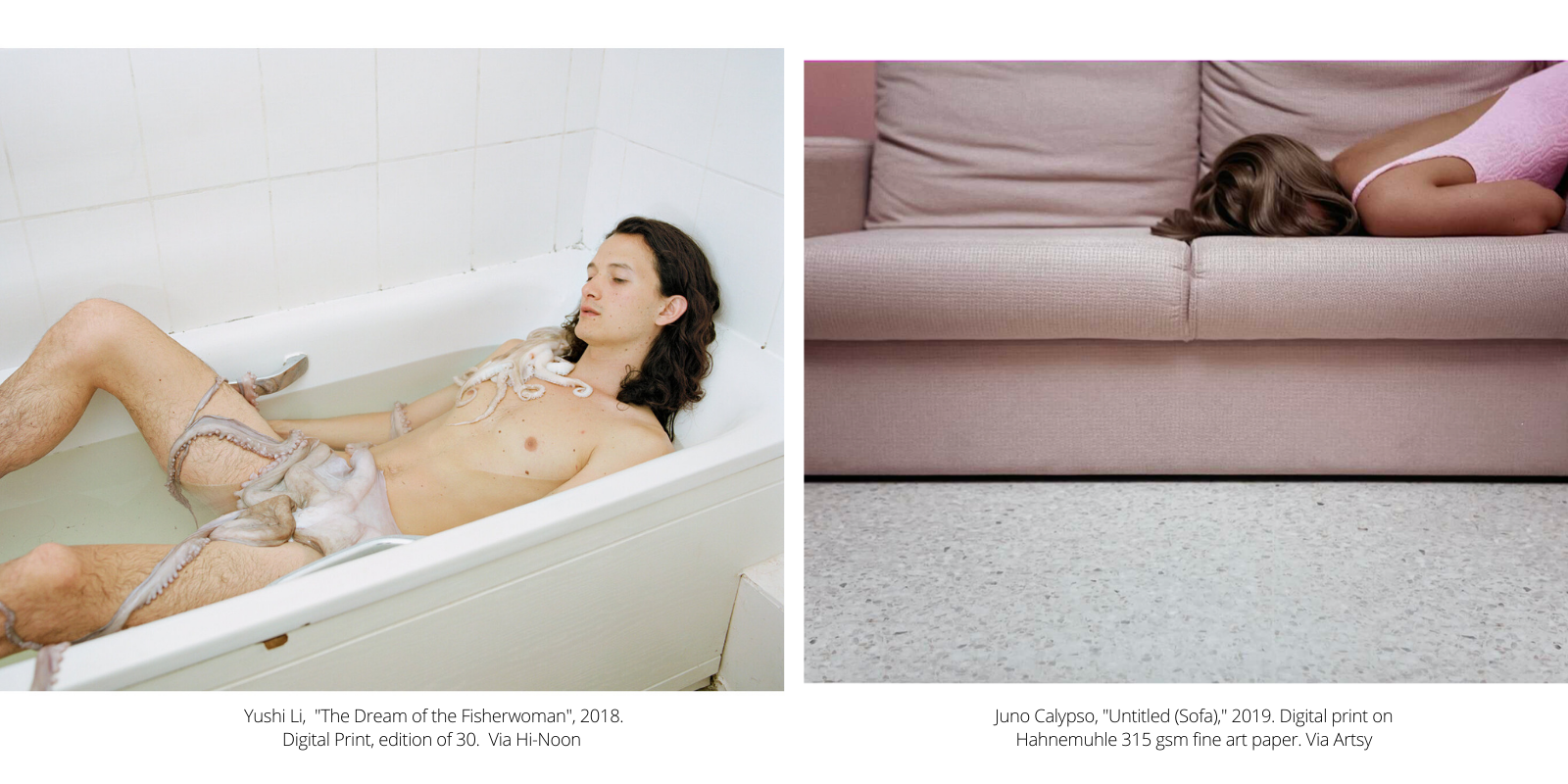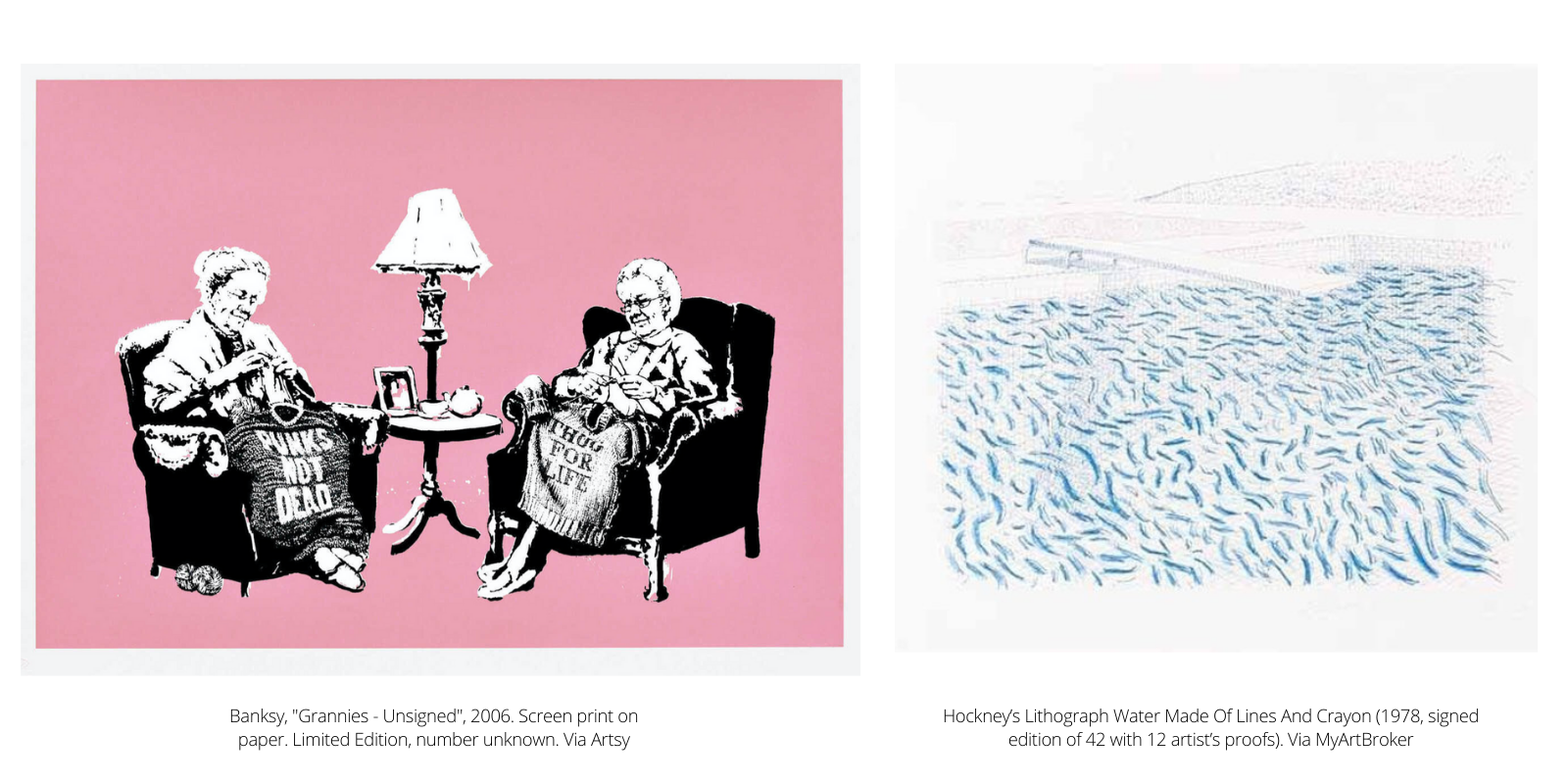Art Explained : Prints
Art collecting may seem daunting, especially for those who are just starting out. Where do you start? How much do you want to spend? What kind of art style do you want to acquire? Some questions may seem easier to answer than others, but the truth is that even the simplest of decisions can quickly become much more complex than they first appear.
Deciding what kind of art you want to buy is something that ultimately falls within your taste and budget, so you shouldn’t have to do much thinking around that. But even still, when it comes to understanding the terms used to describe the various artwork, mediums and techniques you’re interested in, that’s when you may well get in over your head.
While browsing art online, you will often encounter artworks that are categorised as ‘prints’, ‘multiples’, ‘editions’ and ‘offsets’. It can often be confusing to navigate the many nuances and technicalities that differentiate all these terms from one another, particularly if you’re new to the art market lingo. We’ve put together some guides to each of these four terms, to demystify them, and explain where they differ from, but also overlap with, one another.

Prints
To put it simply, a ‘print’ is any artwork that has been created in two or more copies, typically on paper.
The three most common types of prints are: ‘Digital Prints’, ‘Fine Art Prints’ and posters. Let’s start with the easiest to explain: posters. These are characterised by being cheap (often no more than £10), and are mass-produced reproductions of artworks that you would usually buy in a museum shop. These are not unique art pieces, and the print run is almost always unlimited, (which is similar to how merchandise is produced), and therefore they would not be considered part of an art collection. Another important thing to note is that these conventional posters do not come with a Certificate of Authenticity (also known as ‘COA’: This is a permanent record that proves the authenticity of a particular artwork) which is probably one of the most important features of any collectable artwork.
‘Digital Prints’ are either artworks which are stored digitally (which has become increasingly popular recently due to all the possibilities that the NFTs seem to be creating in the art world) or digital artworks that are printed in large, high-quality pigmented inkjet printers. Perhaps it's worth mentioning here that ‘Digital Prints’ can be considered a unique, original artwork if the artist only prints one piece.. But if the artist decides to print multiple copies, then all artworks within the print run become part of an ‘edition’ of prints (and this is the same criteria used to define ‘Fine Art Prints’). So...what’s the difference between a ‘Fine Art Print’ from a ‘Digital Print’, then?

Well, it’s ultimately down to the difference is in the creation process. ‘Fine Art Prints’ are artworks created using what is called a ‘printmaking technique’ which is one of the oldest art making techniques, (dating back to the 6th century). ‘Digital Prints’ consists of a completely digitised process, whilst ‘Fine Art Prints’ are produced through a manual, fully hand-made process.
Printmaking is an art form in itself and consists of various processes of transferring an engraved image plate to a different medium (often paper), multiple times - think of the process like stamping, if you will. And, although it may seem easy, the printmaking process can be considered quite dangerous because of the type of the chemicals it involves, so it needs to be practised with skill and care. It can also be quite an arduous technique that takes many years to master, so many artists tend to collaborate with printmaking studios when creating their print series, rather than owning the whole process themselves.

Regardless of where/who produces the ‘Fine Art Print’ itself, it can be extremely valuable depending on various key factors such as:
- The technique applied (eg. etching, woodcut, lithograph)
- The type of paper used
- The number of editions in the series
- The actual number (of the edition series) assigned to the artwork being discussed (print number one tends to hold a special premium for example)
There are of course many more nuances and considerations but don’t worry! We will explore these in more depth in a future article we are going to post soon - so keep your eyes peeled!
In the ‘Fine Art Prints’ printmaking process, each print is created individually and is, therefore, considered a handcrafted and unique work of art. The popularity of ‘Fine Art Prints’ has actually been on the rise lately due to an increasing number of young collectors who want to acquire works, but are restricted to lower price points.

Well, ‘Fine Art Prints’ have become the natural solution to this, allowing these young collectors to own works from an otherwise ‘too-expensive-to-invest-in’ artist, at a fraction of the price of the original piece (usually costing between 10 to 20 percent of the original). However, it’s important to remember; despite their higher availability than the original piece, ‘Fine Art Prints’ are still rarities in their own right, and so can still prove to be smart investment decisions with good appreciation value when chosen wisely.
Before moving on to the next term in our guide (‘Multiples’), you may be wondering which of the print types we’ve just discussed would be the most financially rewarding investment... Well, just remember that posters will always have little to no value unless you can prove their uniqueness, and that is of course something that is in demand (which tends to be quite rare in our experience!). ‘Digital Prints’ are likely to hold less monetary value than ‘Fine Art Prints’ because there is no hand-made artistry involved in the printing process. Fine Art Prints tend to hold their value the best because they will always be considered truly unique art pieces, this is because each print has its tiny details that make it different from other designs within the same edition.
The second part of this guide explores what a ‘multiple’ is.







